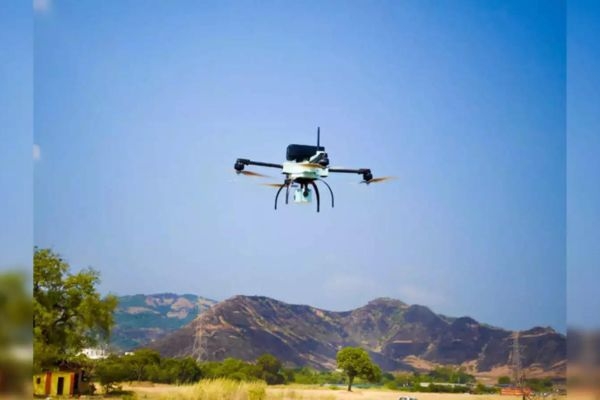Drones as New Generation Weapons System - Fallout on Post-Modern Warfare
08 Mar 2024 12:48:44
Drones of all types have been extensively employed by both State and Non-State actors on strike missions and other nefarious activities like dropping weapons and drug trafficking. For example, Azerbaijan’s Unarmed Combat Aerial Vehicle (UCAVs) destroyed Armenia’s formidable array of not only ground-based air defenses, but also 1267 combat systems to include 101 tanks, 21 APCs, 212 artillery guns, 54 AA guns and missile launchers among others in the Second Nagorno-Karabakh War.
In the ongoing two year Russia-Ukraine war, both sides have employed 'kamikaze' drones and UAVs extensively at each other's territories besides the battlefield. Ukraine has launched long-range UCAV attacks on Moscow besides striking deep to include an airport near Russia's border with Estonia and Latvia besides St. Petersburg and North-Western Russia, and Crimea. In turn, Russia has launched Shahed-type drone attacks on Kyiv, Kharkiv and other cities in Ukraine. In the fall of 2023 alone, Ukrainian drones destroyed 75 Russian tanks and 101 artillery pieces. From August 28 to September 4, 2023, the share of drones, both 'kamikaze' drones and UAVs, that destroyed Russian forces include: Tanks - 44%; Armored combat vehicles - 57%; Artillery systems - 20.1%; MLRS – 15.3%; Special equipment: 2.5%; and Motor vehicles - 22.77%.

In the Gaza War between Israel and Hamas, drones have been employed by both sides. Even the US has employed drone strikes to kill militant commander in Iraq. The most devastating is the one-way drone attack by a non-State actor on a US base in northeast Jordan that killed three service members and at least 34 injured despite having the surveillance system in place.
The Houthi’s, a rebel group in Yemen, have been using drones in warfare since 2015. In November 2023, the Houthi’s began a series of attacks on ships in the Red Sea, targeting Southern Israel and ships they claimed were linked to Israel.
Closer home, Pakistan attacked the Air Force Station in Jammu on June 27, 2021 employing low–flying drones that dropped two improvised explosive devices (IEDs). Pakistan has also deployed several UACVs for combat operations against the Tehrik-i-Taliban Pakistan (TTP) in North Waziristan’s Shawal Valley. The Pakistan Navy is already operating several UAVs for surveillance such as the Scan Eagle and Uqab.
Let me highlight that there are many types/category of Drones used for military purposes to include: Unarmed Aerial Vehicle (UAV); UCAV; miniature UAVs/small UAV (SUAV); Micro Air Vehicles (MAVs); Autonomous Swarm Drones; Loitering Munitions; and so on.
Initially, UAV was used effectively as sensor platforms, feeding vital information about the enemies’ movements back to command centers. The rapid technology developments saw the fusion of information technology, cloud computing, computer vision, artificial intelligence, machine learning, deep learning, thermal sensors, robotics and space technologies to create systems that are more than the sum of their parts to carry out missions without human intervention. And, the UCAV are today employed in strike mission mode at a cheap cost compared to fighters. The most significant technology shift of UCAVs is the concept of a “Loyal Wingman” drone. The idea is to build an unmanned platform or “drone” that can be fully operated from the cockpit of a manned aircraft. An ability to directly operate the flight path, sensor payload, and data processing of a drone from the cockpit, without having to route ISR data or video feeds through a ground control station, massively reduces latency and multiplies operational possibilities.
Yet another significant development is Miniature UAVs, small UAV (SUAV), which is small enough to be man-portable has far reaching implications on operations of all types. Miniature UAVs range from Micro Air Vehicles (MAVs) that can be carried by an infantryman, to man-portable UAVs that can be carried and launched like infantry man-portable air-defense system.
Most important, autonomous swarm drones, nimble and efficient marvels of innovation, the new face of warfare, by their very nature, function in groups promise to redefine the contours of military strategy. Swarm drones aren’t merely tools of engagement; they serve as both an assertive presence and a potent deterrent. A meticulously coordinated, autonomous drone swarm not only has the potential to dominate combat scenarios but can also deter potential aggression, averting escalations in volatile regions. Furthermore, each drone within the swarm can communicate with its peers, allowing them to operate as a cohesive unit. This ability to act in concert, combined with the inherent adaptability and versatility of individual drones, results in a force that can swiftly respond to changing conditions on the battlefield.
Yet another vital aspect is the requirement of human control necessary to control the drones until the drone reaches its intended target. Some UAV/UCAV offer intermediate degrees of autonomy - remotely piloted in most contexts but having an autonomous return-to-base operation: Optionally Piloted UAVs (OPVs). However, the line-of-sight (LOS) link between the drone and the human operator is vulnerable to jamming and Electronic Warfare (EW). If the enemy can break the LOS link, the drone either returns to pre-fed coordinates (provided it has the range), diverts to an alternative target, or simply crashes — mission failure.
To understand the full significance of the fallout of “Drones as New Generation Weapons System” in post-modern warfare, the technology developments and capabilities in the broad outline of various nations to include China and Pakistan in particular and others like Turkey and Iran, besides USA and Israel is vital. Such a broad review will provide insight into “Where Does India Stand” with regard to the present day capabilities to wage Drone Warfare